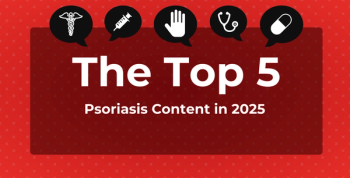
Alemtuzumab Retained Long-Term Safety, Efficacy in Patients With Relapsing-Remitting MS of All Ages
Alemtuzumab improved clinical and magnetic resonance imagining outcomes in patients with relapsing-remitting multiple sclerosis across varying age groups and maintained efficacy through year 8 of follow up.
Patients of varying ages with relapsing-remitting
In the CARE-MS I and II studies, patients were administered 2 annual regimens of alemtuzumab, 1 at baseline and 1 at the start of the second year, or 3 weekly doses of SC IFNB-1a for 2 years. After CARE-MS I and II, participants had the opportunity to enroll in 2 consecutive extension studies, in an effort to evaluate the long-term effects of alemtuzumab over a period of 8 years.
Researchers conducted the current study to examine how alemtuzumab affected patients of different ages .
Data from 811 participants treated with alemtuzumab at baseline were stratified by age.
- 137 patients, or 17%, were 25 years of age or younger
- 350 patients, or 43%, were older than age 25 and up to 35 years of age
- 238 patients, or 29%, were older than age 35 and up to 45 years of age
- 86 patients, or 11%, were older than 45 years of age
Of the total, 590 patients, or 73%, remained on study through year 8. Researchers found the annualized relapse rate (ARR) of patients from all age groups who received alemtuzumab significantly improved at year 2 and stabilized at year 8 compared to those who received SC IFNB-1a.
Expanded Disability Status Scale scores had either improved or stabilized, compared to baseline, for 59% to 80% of patients who received alemtuzumab at year 8. A greater number of alemtuzumab-treated patients from all age groups failed to demonstrate 6-month confirmed disability decline and attained 6-month confirmed disability improvement at year 2.
Confirmed disability worsening-free rates in patients who received alemtuzumab decreased with age through year 8 while confirmed disability improvement rates showed less variability.
Among all age groups, the percentages of patients without MRI disease activity were significantly higher for patients who received alemtuzumab compared to those who received SC IFNB-1a in year 2. A total of 61% to 86% of alemtuzumab-treated patients from all age groups remained free of MRI disease activity at year 8.
Within each age group through year 2, Alemtuzumab was also found to be more effective than SC IFNB-1a at reducing median annual brain volume loss. Patients who received alemtuzumab experienced a loss of less than or equal to 0.26% annually in years 3 through 8. The occurrences of adverse events were balanced across all age groups.
“Alemtuzumab significantly improved clinical and MRI outcomes vs SC IFNB-1a through [year] 2 in CARE-MS patients across all age groups tested. Efficacy was maintained through [year] 8, with a manageable and consistent safety profile across age groups, suggesting prolonged benefit with alemtuzumab irrespective of age,” researchers concluded.
Reference
Bass AD, Arroyo R, Boster A, et al. Alemtuzumab improves clinical and magnetic resonance imaging outcomes in relapsing-remitting multiple sclerosis patients across age groups: CARE-MS I and II 8-year follow-up. Presented at: 33rd Annual Meeting of the Consortium of Multiple Sclerosis Centers; May 28-June 1, 2019; Seattle, Washington. Abstract DXT05.
Newsletter
Stay ahead of policy, cost, and value—subscribe to AJMC for expert insights at the intersection of clinical care and health economics.








































